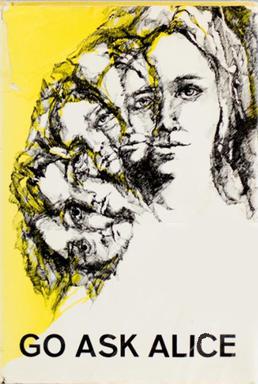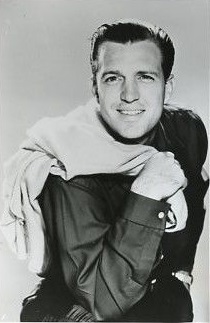Related Research Articles

Timothy Francis Leary was an American psychologist and author known for his strong advocacy of psychedelic drugs. Evaluations of Leary are polarized, ranging from bold oracle to publicity hound. According to poet Allen Ginsberg, he was "a hero of American consciousness", and writer Tom Robbins called him a "brave neuronaut". During the 1960s and 1970s, Leary was arrested 36 times. President Richard Nixon called him "the most dangerous man in America".

Charles Milles Manson was an American criminal, cult leader and musician who led the Manson Family, a cult based in California, in the late 1960s. Some of the members committed a series of at least nine murders at four locations in July and August 1969. In 1971, Manson was convicted of first-degree murder and conspiracy to commit murder for the deaths of seven people, including the film actress Sharon Tate. The prosecution contended that, while Manson never directly ordered the murders, his ideology constituted an overt act of conspiracy.

Jean Dorothy Seberg was an American actress. She is considered an icon of the French New Wave as a result of her performance in Jean-Luc Godard's 1960 film Breathless.
Arthur Gordon Linkletter was a Canadian-born American radio and television personality. He was the host of House Party, which ran on CBS radio and television for 25 years, and People Are Funny, which aired on NBC radio and television for 19 years. He became a naturalized United States citizen in 1942.

Harris Glenn Milstead, better known by the stage name Divine, was an American actor, singer, and drag queen. Closely associated with independent filmmaker John Waters, Divine was a character actor, usually performing female roles in cinematic and theatrical productions, and adopted a female drag persona for his music career.

Go Ask Alice is a 1971 book about a teenage girl who develops a drug addiction at age 15 and runs away from home on a journey of self-destructive escapism. Attributed to "Anonymous", the book is in diary form, and was originally presented as being the edited actual diary of the unnamed teenage protagonist. Questions about the book's authenticity and true authorship began to arise in the late 1970s, and Beatrice Sparks is now generally viewed as the author of the found manuscript–styled fictional document. Sparks went on to write numerous other books purporting to be real diaries of troubled teenagers. Some sources have also named Linda Glovach as a co-author of the book. Nevertheless, its popularity has endured, and, as of 2014, it had remained continuously in print since its publication over four decades earlier.

Lois Ruth Maxwell was a Canadian actress who portrayed Miss Moneypenny in the first fourteen Eon-produced James Bond films (1962–1985), from Dr. No in 1962 to A View to a Kill in 1985. She did not appear in the 1967 adaptation of Casino Royale, nor in the 1983 remake of Thunderball, Never Say Never Again, as the production was not Eon's, though she did, as a similar character, appear in the spoof O.K. Connery.

Margaret Ruth Kidder, known professionally as Margot Kidder, was a Canadian-American actress whose career spanned five decades. Her accolades include three Canadian Screen Awards and one Daytime Emmy Award. Though she appeared in an array of film and television roles, Kidder is best known for her performance as Lois Lane in the Superman film series, appearing in all four original films.

The Diane Linkletter Story is a 1970 16mm short film by American filmmaker John Waters starring Divine, Mary Vivian Pearce, and David Lochary.

Tarita Cheyenne Brando was a French fashion model. She was the daughter of actor Marlon Brando by his third wife Tarita Teriipaia, an actress from French Polynesia whom he met while filming Mutiny on the Bounty in 1962.

On the evening of August 4, 1962, American actress Marilyn Monroe died at age 36 of a barbiturate overdose inside her home at 12305 Fifth Helena Drive in Brentwood, Los Angeles, California. Her body was discovered before dawn the following morning, on August 5. Monroe had been one of the most popular Hollywood stars during the 1950s and early 1960s, and was a top-billed actress for the preceding decade. Her films had grossed $200 million by the time of her death.

Talitha Dina Getty was a Dutch actress, socialite, and model who was regarded as a style icon of the late 1960s. She lived much of her adult life in Britain and, in her final years, was closely associated with the Moroccan city of Marrakesh. Her husband was the oil heir and subsequent philanthropist John Paul Getty Jr.

A Lizard in a Woman's Skin is a 1971 giallo film directed by Lucio Fulci and produced by Edmondo Amati and Robert Dorfmann. It stars Florinda Bolkan, Stanley Baker, Jean Sorel, Leo Genn, and Anita Strindberg. The film was an Italian-Spanish-French co-production.
Henry Louis Wallace, also known as the “Taco Bell Strangler”, is an American serial killer who killed eleven black women in South Carolina and North Carolina from March 1990 to March 1994. He is currently awaiting execution at Central Prison in Raleigh.
A teenage tragedy song is a style of ballad in popular music that peaked in popularity in the late 1950s and early 1960s. Examples of the style are also known as "tear jerkers", "death discs" or "splatter platters", among other colorful sobriquets coined by DJs that then passed into vernacular as the songs became popular. Often lamenting teenage death scenarios in melodramatic fashion, these songs were often sung from the viewpoint of the dead person's sweetheart, as in "Last Kiss" (1961), or another witness to the tragedy, or the dead person. Notable examples include "Teen Angel" by Mark Dinning (1959), "Tell Laura I Love Her" by Ray Peterson (1960), "Ebony Eyes" by the Everly Brothers (1961), "Dead Man's Curve" by Jan and Dean (1964), and "Leader of the Pack" by the Shangri-Las (1964). The genre's popularity faded around 1965, but the hits from its heyday inspired a host of similar songs and parodies over the years.

Arthur Jack Linkletter was an American game show and television host and entertainer. He was the son of Art Linkletter.

Antone Charles "Tony" Costa, sometimes referred to as the Cape Cod Vampire or the Cape Cod Cannibal was an American serial killer who was active in and around the town of Truro, Massachusetts, during 1968–1969. The dismembered remains of four women were found in or near a forest clearing where Costa grew marijuana. His crimes gained international media attention when the district attorney falsely alluded to cannibalism.
Pale Flower is a 1964 Japanese film noir directed by Masahiro Shinoda. The film is about Muraki a Yakuza hitman just released from prison. At an illegal gambling parlor, he finds himself drawn to a mysterious young woman named Saeko. Though Saeko loses large sums of money, she asks Muraki to find games with larger and larger stakes. The two become involved in an intense mutually destructive relationship. Film critic Roger Ebert gave Pale Flower four stars and placed it on his list of Great Movies.

The following events occurred in October 1969:
References
- ↑ "TV Show Host Art Linkletter Dies at 97". foxnews.com. May 26, 2010. Retrieved November 14, 2012.
- ↑ Scott, Walter (January 10, 1970). "Walter Scott's Personality Parade". The Spokesman-Review. p. 2. Retrieved November 14, 2012.
- ↑ Heffernan, Harold (February 18, 1968). "Diane's Glad Of Her Show Business Link". The Pittsburgh Press . Retrieved November 14, 2012.
- ↑ Mikkelson, Barbara (August 15, 2005). "The Scarlet Linkletter". snopes.com.
- ↑ "Death of Diane Linkletter".
- ↑ "Linkletter Blames LSD For Death Of Daughter". The Morning Record. 1969-10-06. p. 1. Retrieved November 14, 2012.
- ↑ "Art Linkletter: It Wasn't Suicide, It Was Murder". The Dispatch . October 6, 1969. p. 4. Retrieved November 14, 2012.
- ↑ "Profits of Tragedy". Time. January 5, 1970. Archived from the original on February 12, 2008. Retrieved January 16, 2008.
- ↑ D.F. Wallace, The Pale King: An Unfinished Novel (Little, Brown 2011), p. 179.